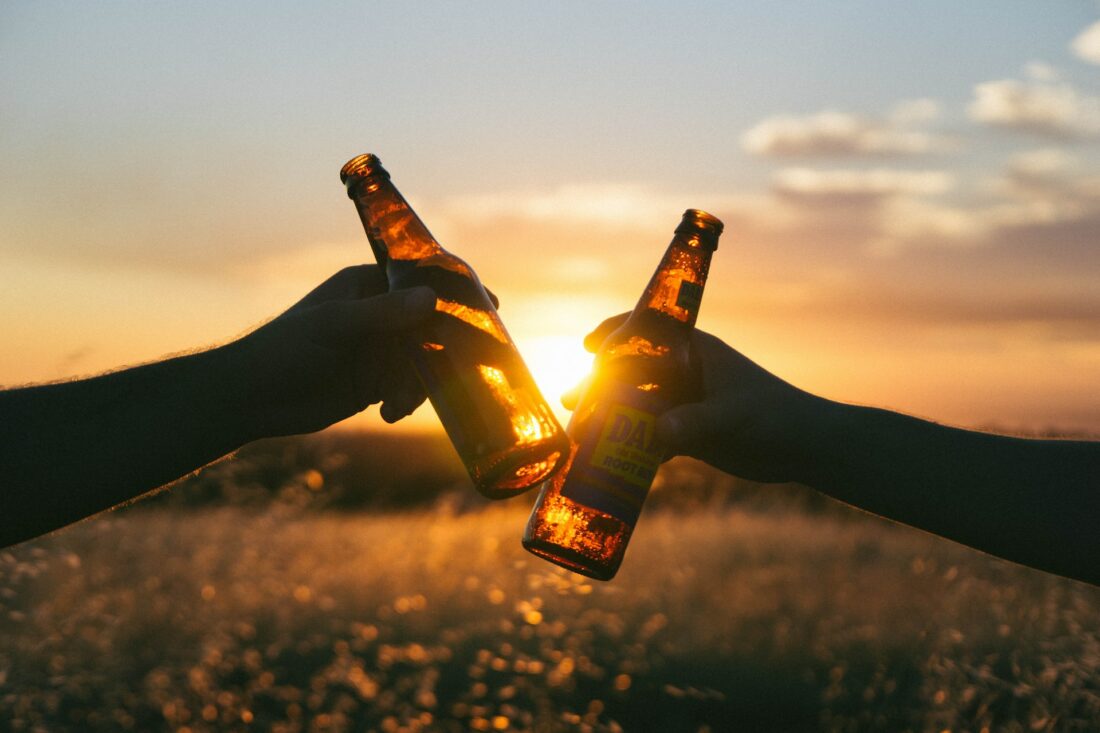
Alcohol consumption affects everyone differently, and there is no one-size-fits-all answer to the question of how many beers it takes to get drunk. Factors like body weight, gender, and tolerance can all play a role in how quickly someone becomes intoxicated. However, there are some general guidelines that can help people estimate how many beers it takes to reach a certain level of intoxication.
Table of Contents
Understanding Alcohol Content
Alcohol content is the amount of ethanol present in a drink. The higher the alcohol content, the more potent the drink. Understanding alcohol content is essential to knowing how many beers it takes to get drunk.
The alcohol content of beer varies depending on the type of beer. Generally, beer alcohol content ranges from 2% to 12%. Light beers have a lower alcohol content, while craft beers and ales have a higher alcohol content. It is essential to know the alcohol content of the beer you are drinking to determine how many beers it takes to get drunk.
The following table shows the average alcohol content of different types of beer:
| Type of Beer | Alcohol Content |
| Light Beer | 2-4% |
| Lager | 4-5% |
| IPA | 5-7% |
| Stout | 6-8% |
| Belgian Ale | 7-12% |
It is important to note that the size of the beer also affects the alcohol content. A standard beer is 12 ounces, but some beers come in larger sizes, such as a pint or a bomber. The larger the beer, the more alcohol it contains.
It is also important to know that drinking on an empty stomach can increase the effects of alcohol. Eating food before and during drinking can slow down the absorption of alcohol into the bloodstream and reduce the risk of getting drunk quickly.
 photo credit: pxhere.com
photo credit: pxhere.com
Factors Influencing Alcohol Absorption
Several factors influence how quickly and how much alcohol is absorbed into the bloodstream. These factors include:
Biological Sex
Biological sex is one of the most significant factors that affect alcohol absorption. Women have less dehydrogenase, the enzyme that breaks down alcohol in the stomach, which contributes to higher blood alcohol concentration (BAC) than men drinking the same amount of alcohol. Additionally, women tend to have a higher percentage of body fat, which means that alcohol is diluted in a larger volume of body water, leading to higher BAC levels.
Body Weight
Body weight is another important factor that affects alcohol absorption. Generally, the more a person weighs, the more water they have in their body, which means that the alcohol is more diluted, leading to lower BAC levels. On the other hand, a person with less body weight has less water in their body, meaning that alcohol is less diluted, leading to higher BAC levels.
Rate of Alcohol Consumption
The rate at which alcohol is consumed also affects alcohol absorption. When a person drinks alcohol quickly, their BAC levels rise faster than when they drink alcohol slowly. This is because the liver can only metabolize a certain amount of alcohol per hour. Drinking too much too quickly overwhelms the liver’s ability to metabolize the alcohol, leading to higher BAC levels.
Food Intake
Eating food before or during alcohol consumption can slow down alcohol absorption. Food in the stomach slows down the rate at which alcohol is absorbed into the bloodstream. This is because food reduces the amount of surface area in the stomach that is available for alcohol absorption. Additionally, food helps to slow down the rate at which alcohol is metabolized, leading to lower BAC levels.
Medications
Some medications can affect alcohol absorption and metabolism. For example, medications that affect the liver’s ability to metabolize alcohol can lead to higher BAC levels. Additionally, medications that cause drowsiness or dizziness can increase the effects of alcohol, leading to impaired judgment and coordination.
The Science Behind Getting Drunk
Alcohol is a depressant that affects the central nervous system, leading to impaired judgment, reduced coordination, and slowed reaction time. The amount of alcohol required to get drunk depends on various factors, including age, weight, sex, and tolerance.
The liver plays a crucial role in processing alcohol. It breaks down alcohol into acetaldehyde, a toxic substance that can cause nausea, vomiting, and headaches. The liver then converts acetaldehyde into acetate, which is less harmful and can be used for energy.
The rate at which alcohol is metabolized by the liver varies from person to person. On average, the liver can process about one standard drink per hour. A standard drink is defined as 14 grams (or 0.6 ounces) of pure alcohol, which is roughly the amount in 12 ounces of beer of 5% ABV.
The concentration of alcohol in the bloodstream is measured by Blood Alcohol Concentration (BAC). BAC is affected by the amount of alcohol consumed, the rate of consumption, and the body’s ability to metabolize alcohol.
According to the National Institute on Alcohol Abuse and Alcoholism, a BAC of 0.08% is considered legally drunk in the United States. This level of intoxication can impair vision, hearing, and speech, as well as affect coordination and judgment.
How Many Beers to Get Drunk
The number of beers it takes to get drunk varies from person to person and depends on several factors, including weight, gender, and tolerance. However, on average, it takes around 4 to 5 beers for an adult male weighing between 86-90 kg (190-200 pounds) to become intoxicated. On the other hand, it may take 3 to 4 beers for an adult female weighing between 73-77 kg (160-170 pounds) to get drunk.
Light Beer
Light beer typically has a lower alcohol content than regular beer, making it a popular choice for those who want to enjoy a few drinks without getting too drunk. On average, it may take around 6 to 8 cans of light beer (12 ounces each) to become intoxicated for an adult male weighing between 86-90 kg (190-200 pounds). For an adult female weighing between 73-77 kg (160-170 pounds), it may take around 4 to 6 cans of light beer to get drunk.
Regular Beer
Regular beer typically has an alcohol content of around 5%, and it is the most popular type of beer consumed worldwide. On average, it may take around 4 to 5 cans of regular beer (12 ounces each) for an adult male weighing between 86-90 kg (190-200 pounds) to get drunk. For an adult female weighing between 73-77 kg (160-170 pounds), it may take around 3 to 4 cans of regular beer to become intoxicated.
Strong Beer
Strong beer, or high-alcohol beer, typically has an alcohol content of around 7% or higher. It is a popular choice for those who want to get drunk quickly. On average, it may take around 3 to 4 cans of strong beer (12 ounces each) for an adult male weighing between 86-90 kg (190-200 pounds) to become intoxicated. For an adult female weighing between 73-77 kg (160-170 pounds), it may take around 2 to 3 cans of strong beer to get drunk.
Effects of Binge Drinking
Binge drinking can have various negative effects on the body. According to the National Institute on Alcohol Abuse and Alcoholism (NIAAA), binge drinking is defined as a pattern of drinking alcohol that brings the blood alcohol concentration (BAC) to 0.08% or more. This typically happens if a woman has four or more drinks, or a man has five or more drinks, within about 2 hours.
Some of the short-term effects of binge drinking include:
- Impaired judgment and coordination
- Slurred speech and blurry vision
- Nausea and vomiting
- Headaches and hangovers
- Blackouts and memory loss
Binge drinking can also have long-term effects on the body, including:
- Liver damage and cirrhosis
- Increased risk of heart disease and stroke
- High blood pressure and other cardiovascular problems
- Increased risk of certain cancers, such as breast and colon cancer
- Mental health problems, such as depression and anxiety
It is important to note that binge drinking can also lead to alcohol poisoning, which can be life-threatening. Symptoms of alcohol poisoning include confusion, seizures, slow or irregular breathing, and unconsciousness. If someone is experiencing these symptoms after binge drinking, it is important to seek medical attention immediately.
Responsible Drinking
Drinking alcohol can be a fun and enjoyable experience, but it’s important to drink responsibly. Here are some tips to help you stay safe while drinking:
- Know your limits: Everyone’s tolerance for alcohol is different, so it’s important to know how much you can drink before you start to feel the effects of alcohol. It’s recommended that men consume no more than 4 drinks per day and women consume no more than 3 drinks per day.
- Eat before you drink: Drinking on an empty stomach can lead to getting drunk faster. It’s important to eat before you drink to slow down the absorption of alcohol into your bloodstream.
- Stay hydrated: Alcohol is a diuretic, meaning it can cause dehydration. It’s important to drink plenty of water while drinking alcohol to stay hydrated.
- Don’t drink and drive: Drinking and driving is never a good idea. If you plan on drinking, make sure to have a designated driver or use a ride-sharing service to get home safely.
- Avoid binge drinking: Binge drinking is defined as consuming 5 or more drinks in a row for men and 4 or more drinks in a row for women. Binge drinking can lead to alcohol poisoning and other health problems.
By following these tips, you can enjoy drinking alcohol while staying safe and responsible.
Frequently Asked Questions
How many beers does it take to get drunk at 14?
It is illegal for anyone under the age of 21 to consume alcohol in the United States. Therefore, it is not recommended for a 14-year-old or anyone under the legal drinking age to consume beer or any other alcoholic beverages.
Can one beer get you drunk the first time?
The answer to this question depends on various factors, such as body weight, gender, and tolerance level. For an average adult, it usually takes about 3-4 beers to reach a blood alcohol concentration (BAC) level of 0.08%, which is the legal limit for driving in most states. However, for someone who is drinking for the first time, one beer may be enough to feel the effects of alcohol.
How many beers to get drunk 120 pounds?
Body weight is a significant factor that affects how much alcohol it takes for someone to get drunk. For someone who weighs 120 pounds, it may take two to three beers to reach a BAC level of 0.08%, which is the legal limit for driving in most states. However, it is important to note that everyone’s body reacts differently to alcohol, and it is always best to drink responsibly.
Is two beers drunk driving?
It depends on various factors, such as body weight, gender, and tolerance level. For an average adult, it usually takes about 3-4 beers to reach a BAC level of 0.08%, which is the legal limit for driving in most states. However, for someone who weighs less or has a lower tolerance level, two beers may be enough to reach the legal limit. It is always best to avoid drinking and driving altogether.
Are 20 beers a lot?
Yes, 20 beers is a lot of alcohol and can lead to alcohol poisoning, which is a life-threatening condition. It is important to drink responsibly and know your limits. It is recommended to consume no more than 1-2 drinks per hour and to alternate between alcoholic and non-alcoholic beverages to stay hydrated.
Conclusion
In conclusion, the number of beers it takes to get drunk depends on various factors, including the individual’s weight, gender, and tolerance level, as well as the alcohol content of the beer. The ABV percentage of beer varies from light beers such as lagers at 4% all the way up to imperial stouts at 12%. Other popular styles include pale ales (5%), porters (6%), IPAs (7%), and wheat beers (4%). Darker beers usually have a higher alcohol content than their lighter counterparts.
It is crucial to remember that excessive drinking can lead to serious health problems, including liver damage, heart disease, and even death. Therefore, it is important to drink responsibly and know your limits.
Related Posts
Here are some related posts that readers may find interesting. Readers who enjoyed this article may find these related posts informative and engaging:
- Is whisky really for everyone?: This article discusses the idea that whisky is an elitist drink and argues that it should be accessible to everyone, regardless of their background or experience with the beverage.
- 3 whisky myths debunked – #3: In this post, the author debunks three common myths about whisky, including the idea that all whisky tastes the same and that older whisky is always better.
- 3 burning whisky questions: The author answers three important questions about whisky, including how to taste it properly and how to choose the right glassware.
- An open discussion with Port of Leith Distillery’s founder: This post provides an in-depth look at the Port of Leith Distillery, a new whisky distillery being built in Scotland’s capital city.
- Where Can You “Blend Your Own” Whisky?: This article explores the trend of homebrewing and provides a list of places where readers can blend their own whisky.



